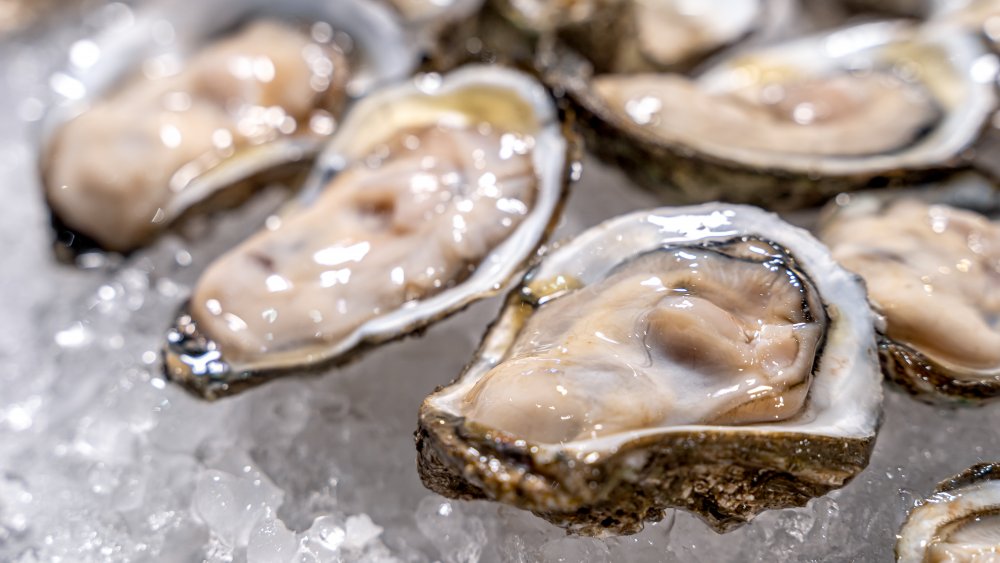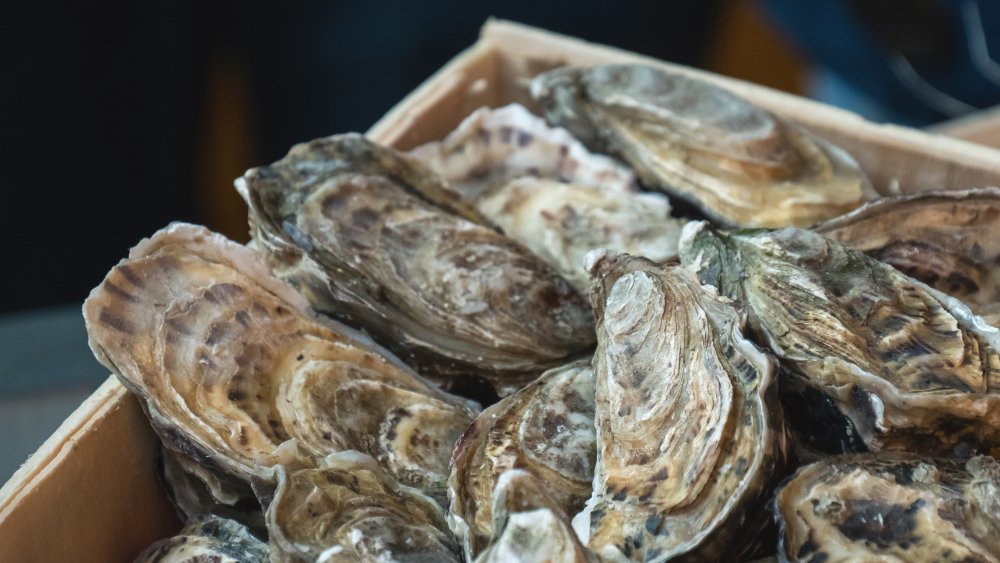Are Raw Oysters Still Alive When We Eat Them?
There are a few things to know about eating raw oysters, and the first is that they could, in fact, still be alive when being eaten. But before explaining how and why oysters very well might still be alive, it's important to know why the bivalves are kept so fresh. Part of the reason is to ensure food safety, but the freshness of an oyster also affects the flavor and texture it has, too (via Business Insider).
Though rare, oysters can sometimes be bad and pass on things like flesh-eating bacteria. Again, this is very rare, but it's worth being cautious over. Since oysters are filter feeders, they can take on pretty much whatever is in their water — including fecal matter from runoff. This is why it is important the oysters are harvested and sold within the two weeks and that the farm checks their water before selling the oysters, which is required by the FDA. To be certain, check the sold date by asking for the shellfish tag that is attached to the bag the oysters are delivered in. If the restaurant doesn't have it, which they should for up to 90 days after purchase, or the date sold is older than two weeks, don't order the oysters.
How raw oysters are prepared
Think again if you believe oysters die when kept out of water. These bivalves can live up to one month inside their shells outside of water. This means that they can be kept on ice and stay fresh for a couple of weeks. By keeping the oysters fresh, it helps ensure food safety as well as optimal flavor and texture of the bivalves. By keeping the oysters fresh longer, it means that they can be killed in preparation right up until the moment you eat them.
When oysters are shucked, they are removed from the shell. This requires the abductor muscle, which opens and closes the shell, to be cut away. The abductor muscle is very close to the heart, according to SimpleMost, though cutting away the muscle is similar to cutting away the animal's spine. Because oysters are a primitive animal that has changed very little over thousands of years, it likely cannot feel pain. Even if it can, oysters do not have brains, so they would not process pain to the extent that humans do. Because oysters are not obviously active to us, it is hard to tell if they are dead after being shucked or if they are still dying when eaten. Something to think about next time you slide one down.

